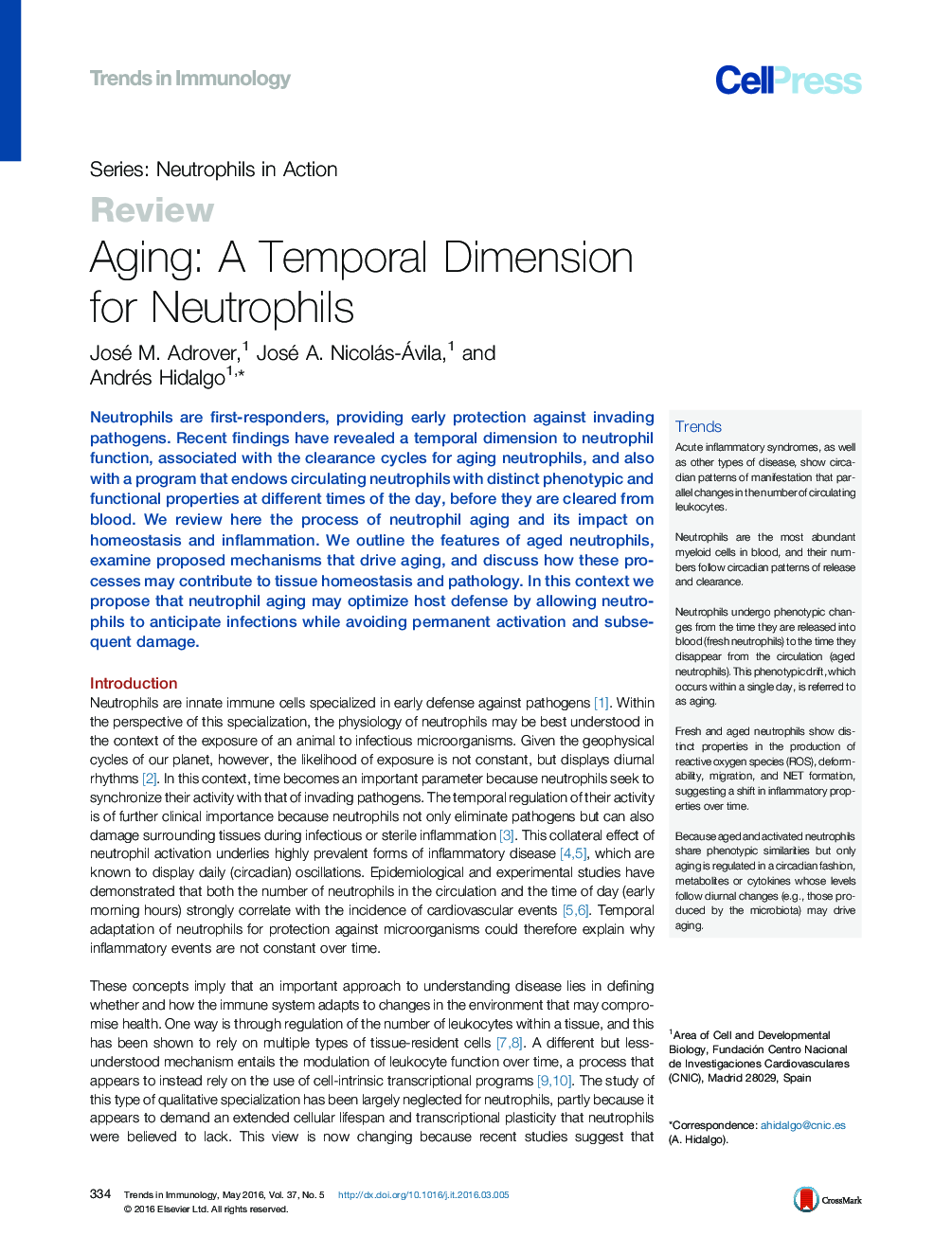| کد مقاله | کد نشریه | سال انتشار | مقاله انگلیسی | نسخه تمام متن |
|---|---|---|---|---|
| 4359715 | 1301097 | 2016 | 12 صفحه PDF | دانلود رایگان |
Neutrophils are first-responders, providing early protection against invading pathogens. Recent findings have revealed a temporal dimension to neutrophil function, associated with the clearance cycles for aging neutrophils, and also with a program that endows circulating neutrophils with distinct phenotypic and functional properties at different times of the day, before they are cleared from blood. We review here the process of neutrophil aging and its impact on homeostasis and inflammation. We outline the features of aged neutrophils, examine proposed mechanisms that drive aging, and discuss how these processes may contribute to tissue homeostasis and pathology. In this context we propose that neutrophil aging may optimize host defense by allowing neutrophils to anticipate infections while avoiding permanent activation and subsequent damage.
TrendsAcute inflammatory syndromes, as well as other types of disease, show circadian patterns of manifestation that parallel changes in the number of circulating leukocytes.Neutrophils are the most abundant myeloid cells in blood, and their numbers follow circadian patterns of release and clearance.Neutrophils undergo phenotypic changes from the time they are released into blood (fresh neutrophils) to the time they disappear from the circulation (aged neutrophils). This phenotypic drift, which occurs within a single day, is referred to as aging.Fresh and aged neutrophils show distinct properties in the production of reactive oxygen species (ROS), deformability, migration, and NET formation, suggesting a shift in inflammatory properties over time.Because aged and activated neutrophils share phenotypic similarities but only aging is regulated in a circadian fashion, metabolites or cytokines whose levels follow diurnal changes (e.g., those produced by the microbiota) may drive aging.
Journal: - Volume 37, Issue 5, May 2016, Pages 334–345
